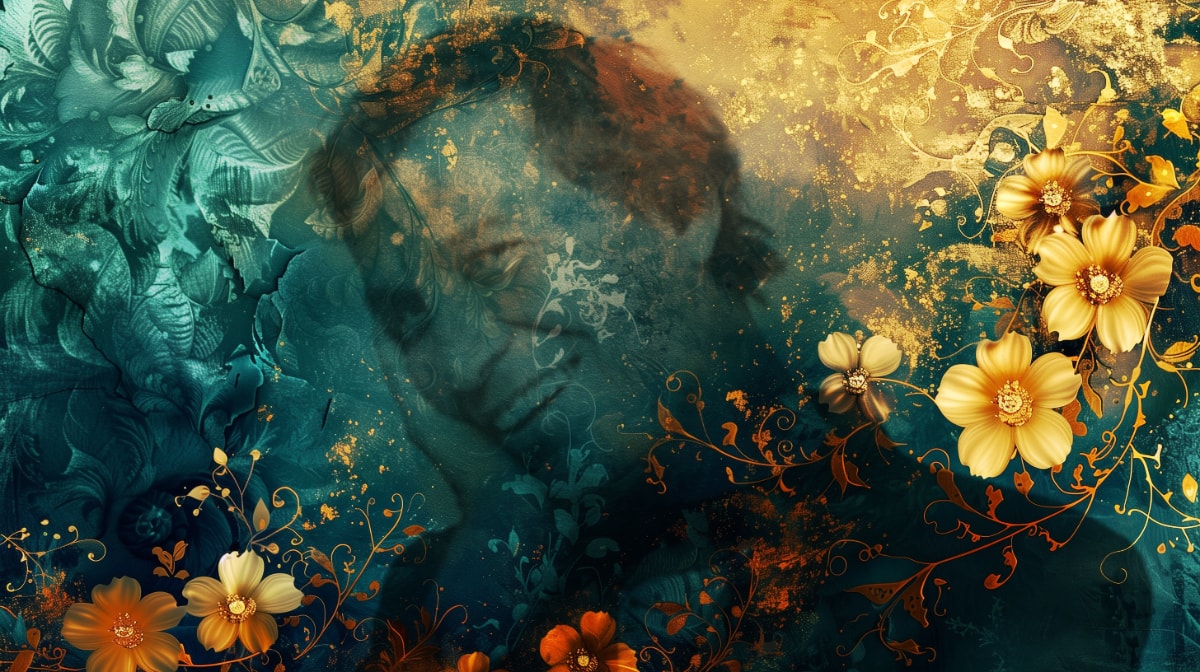
Jean-Pierre Ferland. Jaune and Gala
The death of Jean-Pierre Ferland prompted me to listen to his famous album Jaune. Released in 1970 just after the upheavals of the October Crisis, the significance of the work is said to have influenced the way songs would be produced in Quebec from then on.
I was 11 years old. Although I knew most of the songs on this record, I had just understood its full scope today. It shows that even as a Quebecer, one can be ignorant of the steps others have traced in our collective memory.
It's worth mentioning that Ferland was a singer-songwriter. Much like Plamondon, the musical richness of his songs didn't solely come from him, although for Ferland, he seemed to be the incubator, the crucible of a transcendent imagination.
As an astrologer, I was naturally intrigued by the success of "Jaune" and wondered if the artist's chart displayed the marks of success. While reading his biography here and there on the internet, I was also curious to investigate the chart around the bitter failure of Gala, an opera almost stillborn dedicated to Dali's muse.
Let's first look at the artist's natal chart. The provided time is marked as C, indicating that the information comes from an unknown source. Perhaps the artist knew his rising sign and may have disclosed it to one or another without revealing his actual time of birth. Subsequently, an astrologer would have rectified or validated it with what is known about the individual. The only real problem lies in the placement of the Moon, a swift and crucial celestial body in analysing a birth chart.
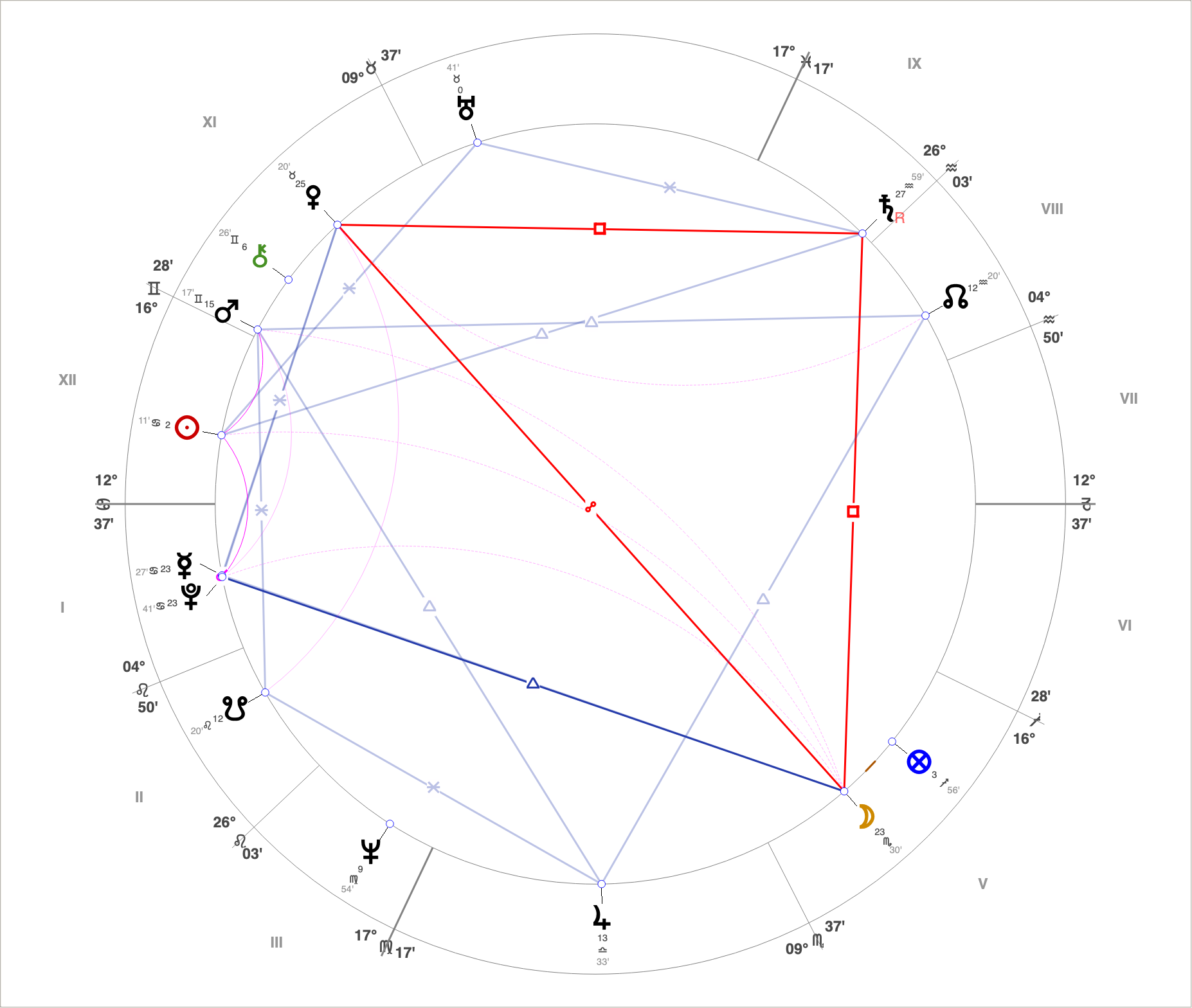
Let's assume this time is valid, even if 6:00 a.m. is a bit suspicious. Beyond the orientation of the sky map, some conclusions can still be drawn.
We immediately notice the exact conjunction of Mercury and Pluto (), in almost perfect harmony with Venus and the Moon (
). The power of speech can stir emotions and express itself through an artistic gaze. At this verbal force's core is a Moon/Venus opposition promoting a sensual desire for fulfillment. At the same time, Saturn is at the apex of this configuration (
). There was in him a great ambition fueled by restraint and solitude.
Ferland's chart has numerous parallels and contra-parallels (the curved lines in the theme). The Sun is thus linked to the Mercury/Pluto conjunction and Mars. This man, beneath his apparent gentleness, likely possessed a complex, inquisitive character capable of stirring emotions and bringing tears through verbal sword thrusts.
That said, the Moon and Pluto are in "harmony" () and mutual, each in the sign of the other. This is certainly a winning recipe for expressing emotion. The distribution of the elements is intriguing.
- 0 in Fire
- 3 in Earth
- 3 in Air
- 8 in Water
All in Water, nothing in Fire. A deficiency in Fire can denote a lack of vitality or difficulty in overcoming obstacles and the inability to possess the energy to fight. In an interview, Ferland admitted that he was, especially when young, a weak man needing protection. Thus, emotional persuasion comes into play. He knew he was neither handsome nor ugly, perhaps leaning more towards the latter as he aged. But much like René Lévesque, he knew how to speak, influence, and stir emotions, making him irresistible.
Jaune
The album Jaune (Yellow) production would have taken almost a year, and it would have been expensive simply because many people were involved in the project for a long time. Looking at Ferland's theme during the 69-70 period, we first notice in 1969 a Uranus/Sun square (), indicating that the individual is at a turning point in his will to express himself. Additionally, slow-moving Pluto would be in a trine for two years with Venus (
). It was thus resonating with the birth conjunction of Mercury/Pluto. Pluto also formed a sextile to the Moon in the fifth sector.
Uranus transiting Jupiter is also worth noting, probably indicating a sudden recognition and emancipation.
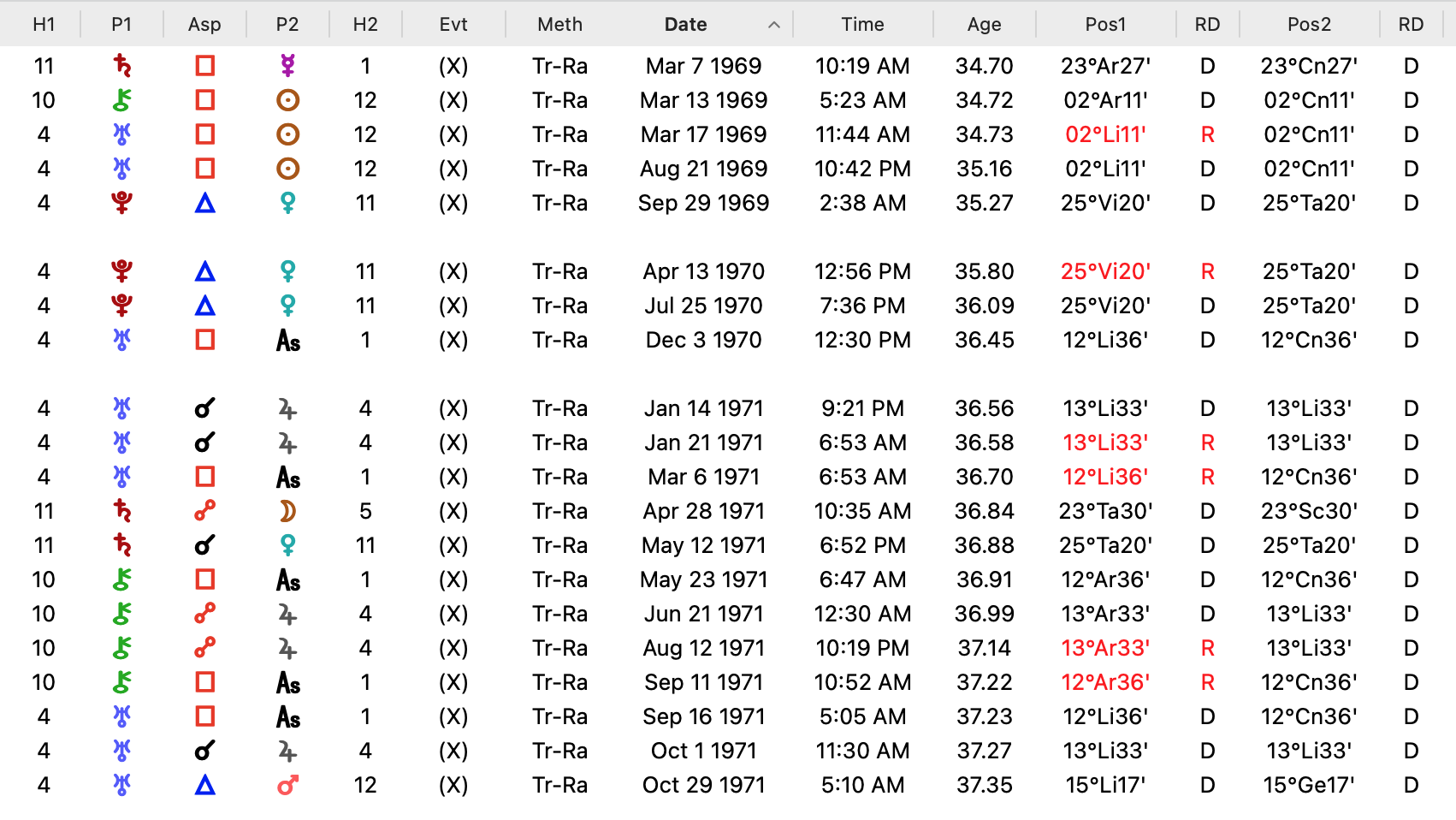
Not knowing Ferland's life, I cannot decipher that during this same period, he was undergoing Saturn transit over his natal Venus in opposition to the Moon. This is generally an indication of relational sobriety, even isolation and loss, especially echoing the natal configuration of the apex Saturn = Moon/Venus. Perhaps this is a confirmation of this man's grand ambition, with this Saturnian transit marking the realization of his goal.
Gala
The Opera Gala is considered a resounding failure. Indeed, it is tough to obtain information about this work, except that it was a financial disaster and was only presented three or four times. What about the theme of that time?
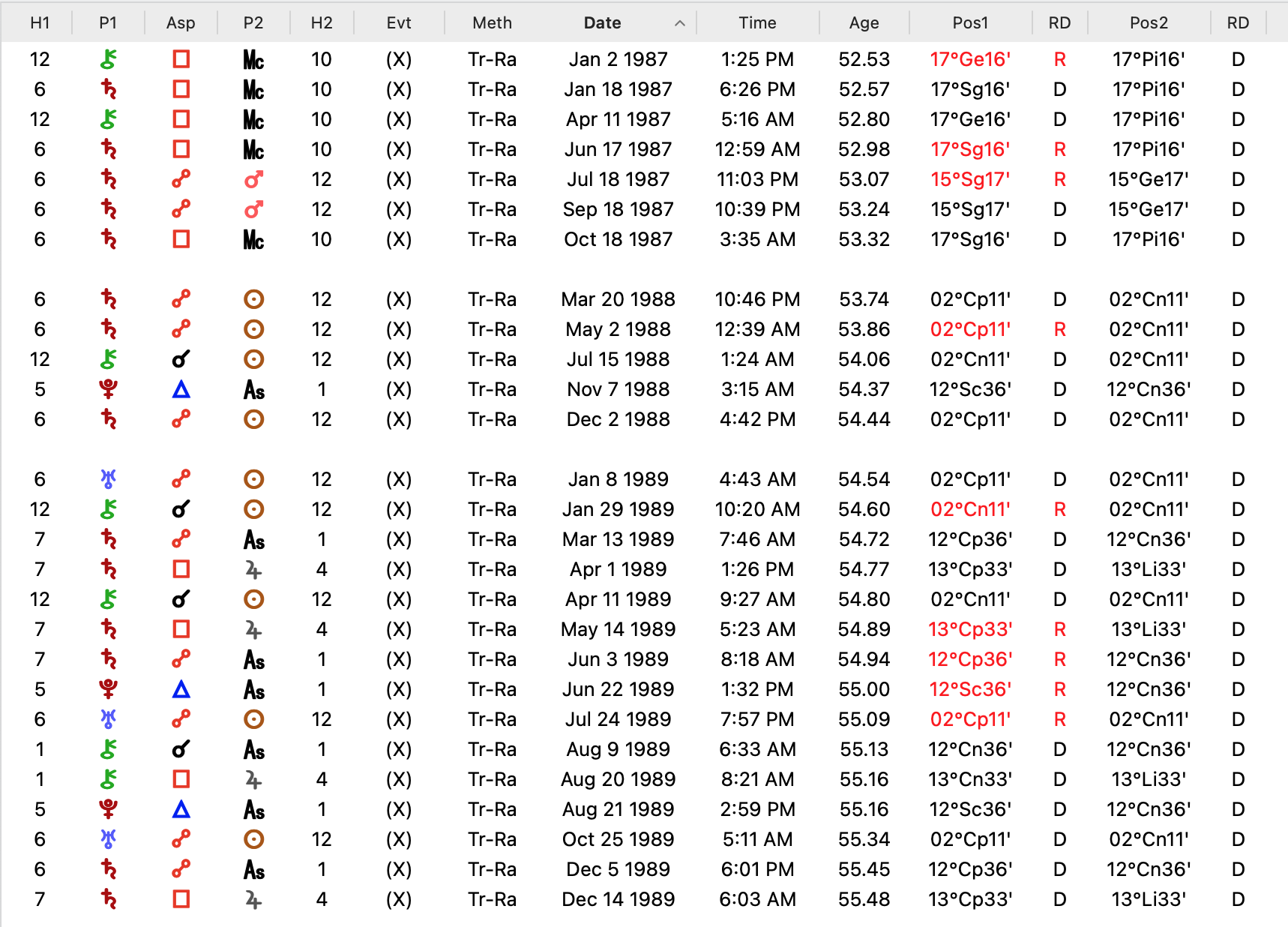
Played in April 1989, the gestation years of the work are likely the two previous years. What's on the astrological menu is a persistent Saturn transit opposition Mars, then Saturn opposition Sun. Chiron was not left out. I'm not sure how to interpret this planetoid, but I often see it in crisis situations. At that time, Chiron was flying over Ferland's Sun...
I don't know what Ferland had in mind then, but an astrologer would certainly have told him that the path was difficult during this period and that such a (financial) adventure would end in disaster or not yield the expected results. Saturn calls for restraint and strips people of their ambitions, just as it can allow recognition when the foundations are solid.
Subsequently, throughout 1989, Uranus opposed the Sun, suggesting that the year was chaotic, full of reversals or reevaluations.
It was in 1992-1993 that intensity and expressive richness returned. After eight years of silence, the album Blue White Blues was successful. And what do we see in Ferland's sky? Pluto! The planet eventually joined the Moon, which was already in harmony at birth!
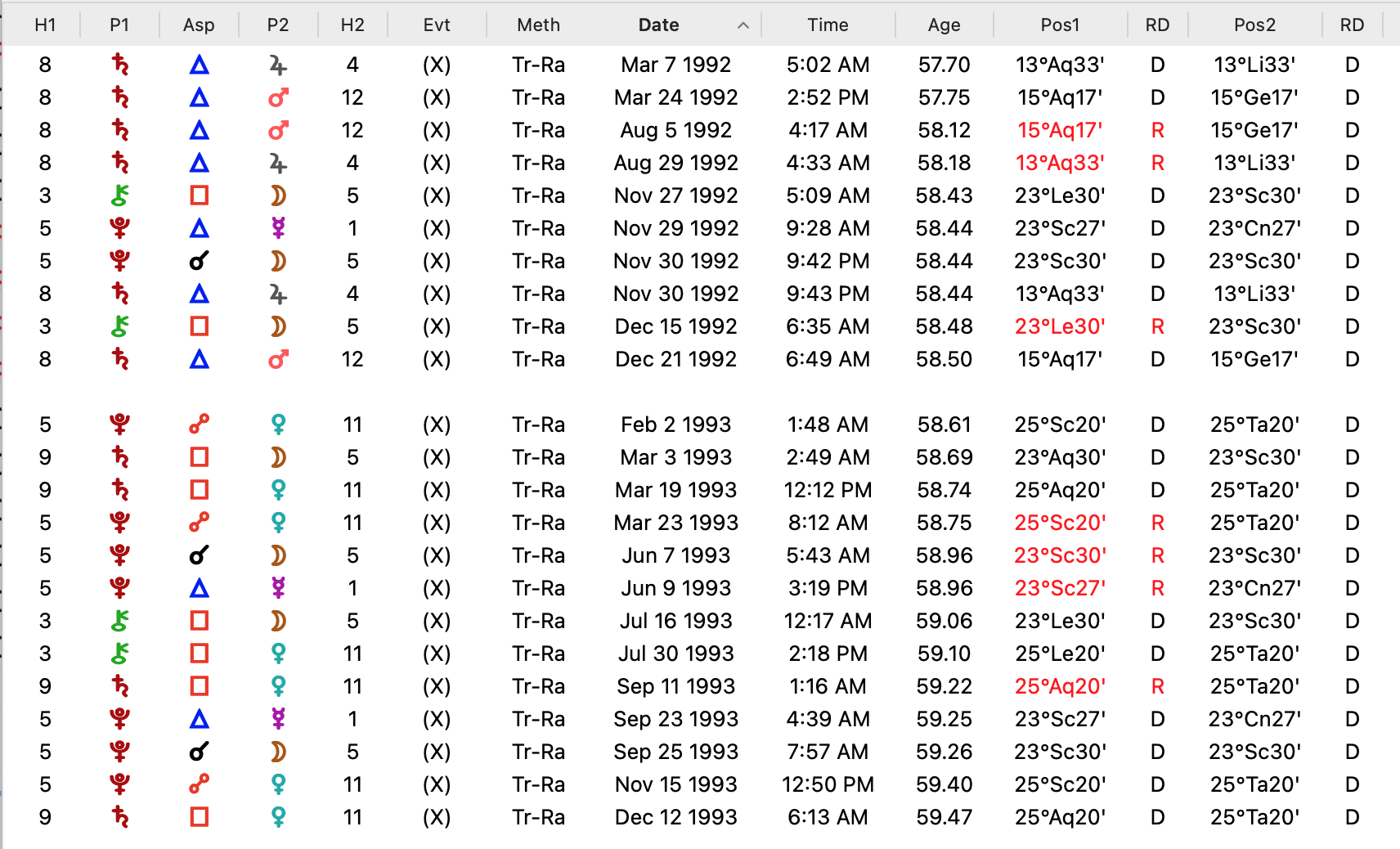
Finally, it is said that in 1995, with Écoute pas ça (Do not listen to this), Ferland once again imposed himself with a very internal and poetic album. Saturn was at the Midheaven, and... Neptune opposed Mars! Sobriety and fog...
Let's go back to Saturn. Twenty-nine years later, in 2024, the planet returns very high in the singer's natal chart... just as we are about to celebrate his national funeral...

